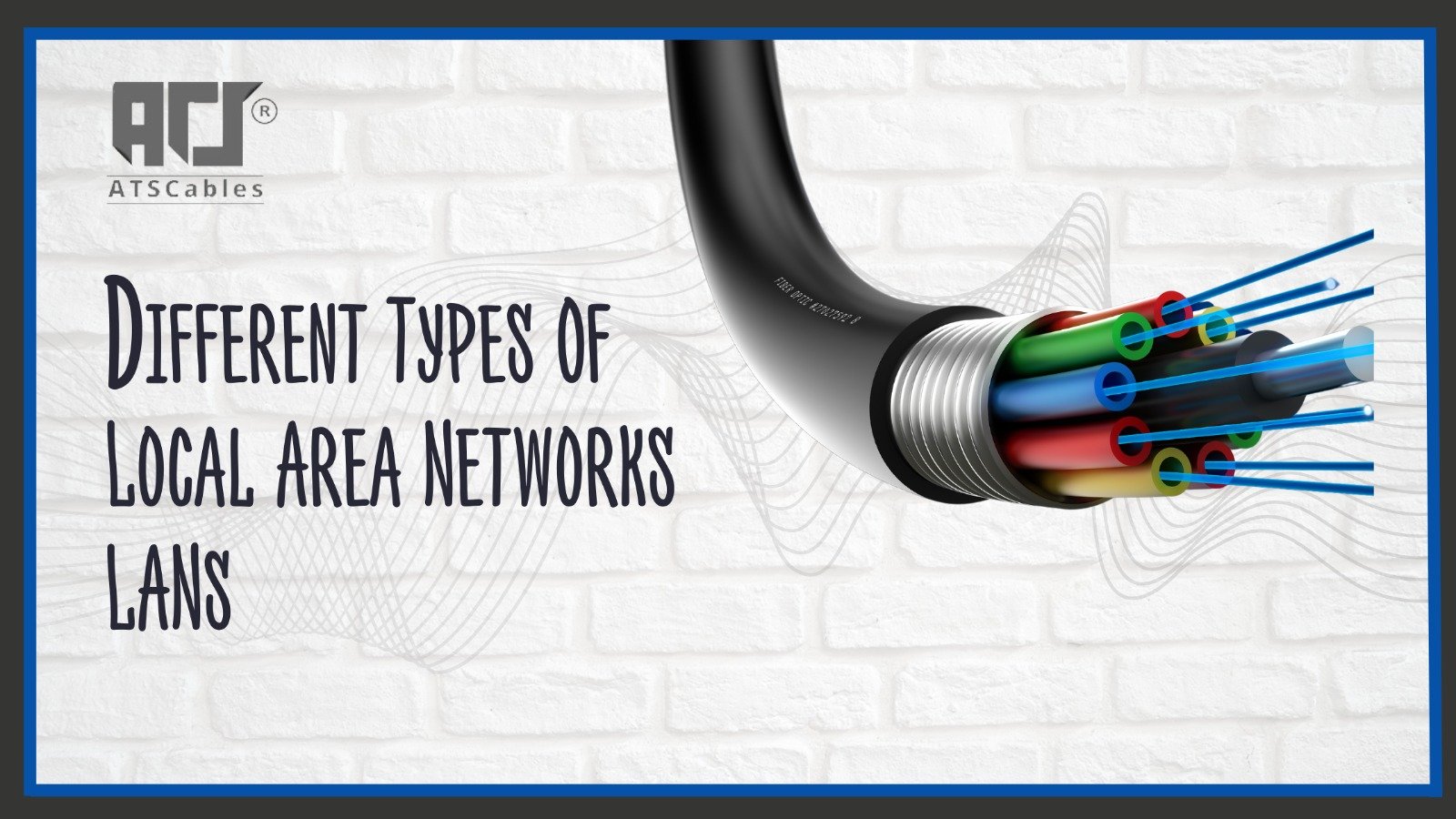
Local Area Networks (LANs): Different Types and Critical Features Users Should Know
The Local Area Network (LAN) operates as an internal connection system that links electronic equipment across restricted territories, including residences, workplaces, and academic institutions. Network resources become accessible while data sharing, together with fast communication, occurs through this system.
Identifying the features of various networking options will help users make better information-based decisions among the available choices. Continue reading the article to understand the proper network cable for your router and the top-quality ethernet cable selection when setting up networks, whether for home or office purposes.
Types of Local Area Networks (LANs)
LANs aren’t one-size-fits-all. Different types of Local Area Networks exist because they have distinct configurations as well as different connections along with specific functions. The following list contains the standard LAN types:
- The device connections through Wired LAN rely on ethernet cables to establish fast, stable communication links.
- The Wireless LAN (WLAN network operates through Wi-Fi technology so users do not require physical cables for connection.
- The Campus Area Network (CAN) spans across different institution buildings to establish a single large Local Area Network (LAN).
- The Virtual LAN (VLAN) technology groups devices through virtual means to boost security and performance capability.
- Passive Optical LAN uses fiber optics as its connection system instead of traditional modem ethernet cables to provide high-speed communications.
The different network infrastructure types achieve separate functions. Wired networks require the fastest available LAN cable yet the best ethernet cable for smart TV streaming purposes needs to be selected specifically for this function.
Essential LAN Components and Their Features
A LAN functions smoothly with the right mix of hardware and configurations. Below are key components and their roles:
- Routers direct data between networks and devices.
- Switches connect devices within the LAN and manage data flow efficiently.
- Access points extend wireless coverage for WLANs.
- Network cables include cat7 cable cat8 cat6, which differ in speed and shielding.
- Ethernet adapters allow computers to connect to the network via ethernet cable for PC.
- Firewalls secure LANs by filtering traffic.
Knowing the difference between cat6 and cat8 ethernet cables helps in choosing the right one for performance needs.
Choosing the Right Ethernet Cable for Your LAN
Cables determine the speed and stability of a LAN. But are some ethernet cables better than others? Yes. Below is a breakdown:
- Cat6 is a good cable that supports speeds up to 10Gbps over short distances.
- Cat7 provides better shielding, making it the best quality ethernet cable for reducing interference.
- Cat8 is the fastest networking cable, capable of handling speeds up to 40Gbps.
- Flat Ethernet cables are a cheap ethernet cable alternative, but not ideal for long distances.
- Outdoor ethernet cables are designed for running ethernet outside with weather-resistant features.
For those wondering what is the best ethernet cord, the answer depends on usage. For gaming is a good ethernet cable for gaming is Cat7 or Cat8. For fiber connections, the best type of ethernet cable for fiber to a router is Cat8.
Optimizing LAN Performance
A well-structured LAN provides reliability and speed. It ensures that you can get the top-notch to carry out your activities. So, how can you optimize your LAN performance? Well, here’s how to get the most out of it:
- Use the right cable length as long cables cause signal loss, so consider how long can you run an ethernet cable before performance drops.
- Secure connections since loose ports can lead to a bad ethernet cable
- Upgrade outdated cables because a new ethernet cable may significantly improve speeds.
- Reduce interference with Shielded cables as they help, especially in high-interference areas.
- If unsure, learn how to tell if the ethernet cable is bad by checking for speed drops and connection instability.
Choosing the best ethernet cables improves overall network efficiency and stability. Following the above-mentioned points ensure that you can make the most out of your LAN network.
Benefits of Using High-Quality Ethernet Cables
Using the right Ethernet cable can significantly enhance network performance and reliability. Here are the key benefits:
- The best high-speed ethernet cable can handle large amounts of data with minimal lag.
- Reduced latency makes it ideal for gaming and streaming, the best ethernet cable fast reduces delays.
- Stronger signal integrity with shielded cables help prevent interference and signal loss.
- Future-proofing as Investing in the latest cat ethernet cable ensures your network remains efficient for years.
- Unlike Wi-Fi, a wired connection using a good ethernet cable offers uninterrupted connectivity.
The selection of a cable depends on three essential elements which include shielding and length in addition to category (Cat6, Cat7, Cat8). Choosing the right cable is vital as it impacts system performance both for extended office connection lanes and speedy video game network connectivity.
Conclusion
Establishing a Local Area Network requires owners to select proper components along with the utilization of premium cables while focusing on subsystem optimization for both velocity and online security. Choosing the correct network cable for your purpose determines the final outcome regarding speed or performance whether you require it for gaming or smart TV use or general purposes.
Check out ATS Cables to access advanced and high-quality networking solutions that match any requirement. ATS Cables provides multiple networking solutions that enable customers to identify the perfect fit based on their needs and personal preferences.
FAQs
What is the difference between Cat6 and Cat8?
Cat6 supports speeds up to 10Gbps, while Cat8 reaches 40Gbps. Cat8 also has better shielding, reducing interference in high-performance networks.
What’s the best ethernet cable for fast internet?
The best ethernet cable fast is Cat8 due to its high bandwidth and superior shielding, ensuring minimal interference.
How to tell what kind of ethernet cable I have?
Check the label on the cable sheath. It will indicate whether it’s a cat7 cable, cat8, cat6, or another category.
Does ethernet cable length affect speed?
Yes. Long cables over 100 meters can cause signal degradation, so choosing the right ethernet cable size is important.
Where can I buy ethernet cables near me?
You can buy ethernet cable near me at electronics stores, online marketplaces, or from specialized providers like ATS Cables.
keep connected
Get updates by subscribe our weekly newsletter

